Do you have a question about the M-Audio Keystation 49 and is the answer not in the manual?
Details the steps for powering and connecting the keyboard to a computer via USB.
Explains the plug-and-play nature for Windows XP and Mac OS X users.
How to configure MIDI software to recognize the Keystation.
How the Advanced Functions button activates 'Edit Mode'.
Roles of black keys (function selection) and white keys (data entry) in Edit Mode.
How to change instruments incrementally using octave buttons.
Method for directly selecting a specific instrument sound by number.
Steps to assign MIDI effects (like pan, volume) to the Modulation Wheel.
Steps to assign MIDI effects to the Volume Slider.
How to send 'All Notes Off' to stop hanging notes.
How to send 'Reset All Controllers' to clear effects.
Configure MIDI Out port as USB-to-MIDI interface.
Solutions for hardware suddenly stopping working.
Resolve issues with the sustain pedal working incorrectly.
Discusses and provides solutions for delays in MIDI sound output.
Details the steps for powering and connecting the keyboard to a computer via USB.
Explains the plug-and-play nature for Windows XP and Mac OS X users.
How to configure MIDI software to recognize the Keystation.
How the Advanced Functions button activates 'Edit Mode'.
Roles of black keys (function selection) and white keys (data entry) in Edit Mode.
How to change instruments incrementally using octave buttons.
Method for directly selecting a specific instrument sound by number.
Steps to assign MIDI effects (like pan, volume) to the Modulation Wheel.
Steps to assign MIDI effects to the Volume Slider.
How to send 'All Notes Off' to stop hanging notes.
How to send 'Reset All Controllers' to clear effects.
Configure MIDI Out port as USB-to-MIDI interface.
Solutions for hardware suddenly stopping working.
Resolve issues with the sustain pedal working incorrectly.
Discusses and provides solutions for delays in MIDI sound output.
| MIDI-keyboard number of keys | 49 keys |
|---|---|
| Product color | Blue |
| Interface | USB |
| USB version | 2.0 |
| USB ports quantity | 1 |
| Windows operating systems supported | Yes |
| Bundled software | SONiVOX Eighty-Eight Ensemble |

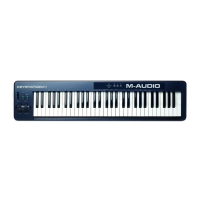
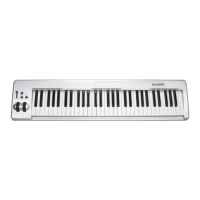
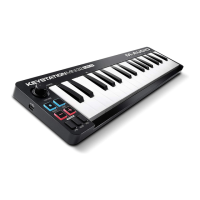

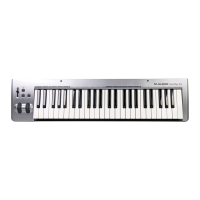
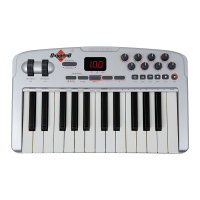

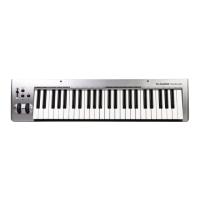
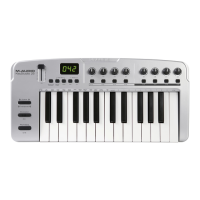
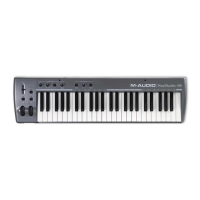
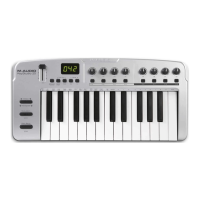
